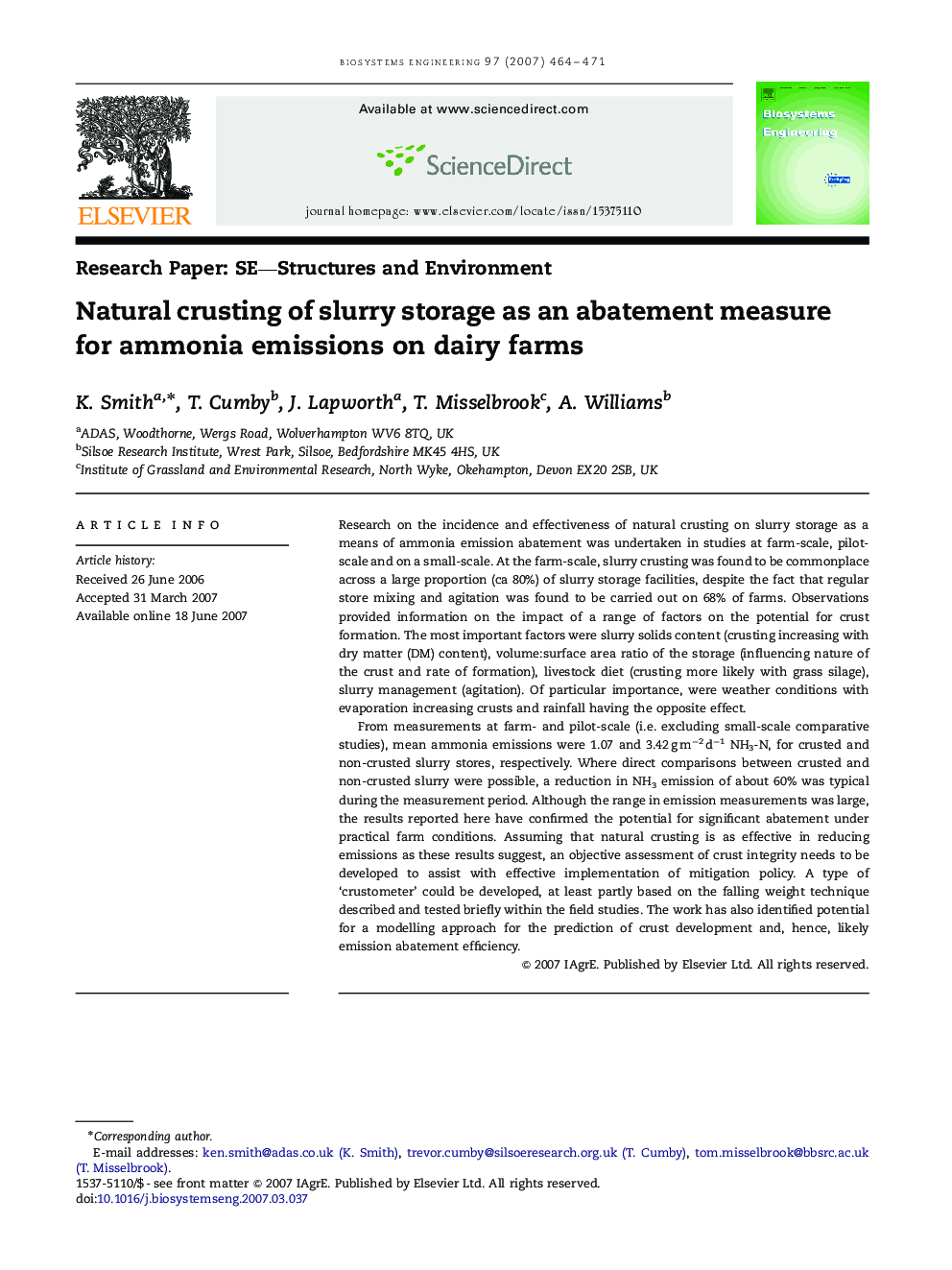| Article ID | Journal | Published Year | Pages | File Type |
|---|---|---|---|---|
| 1712542 | Biosystems Engineering | 2007 | 8 Pages |
Research on the incidence and effectiveness of natural crusting on slurry storage as a means of ammonia emission abatement was undertaken in studies at farm-scale, pilot-scale and on a small-scale. At the farm-scale, slurry crusting was found to be commonplace across a large proportion (ca 80%) of slurry storage facilities, despite the fact that regular store mixing and agitation was found to be carried out on 68% of farms. Observations provided information on the impact of a range of factors on the potential for crust formation. The most important factors were slurry solids content (crusting increasing with dry matter (DM) content), volume:surface area ratio of the storage (influencing nature of the crust and rate of formation), livestock diet (crusting more likely with grass silage), slurry management (agitation). Of particular importance, were weather conditions with evaporation increasing crusts and rainfall having the opposite effect.From measurements at farm- and pilot-scale (i.e. excluding small-scale comparative studies), mean ammonia emissions were 1.07 and 3.42 g m−2 d−1 NH3-N, for crusted and non-crusted slurry stores, respectively. Where direct comparisons between crusted and non-crusted slurry were possible, a reduction in NH3 emission of about 60% was typical during the measurement period. Although the range in emission measurements was large, the results reported here have confirmed the potential for significant abatement under practical farm conditions. Assuming that natural crusting is as effective in reducing emissions as these results suggest, an objective assessment of crust integrity needs to be developed to assist with effective implementation of mitigation policy. A type of ‘crustometer’ could be developed, at least partly based on the falling weight technique described and tested briefly within the field studies. The work has also identified potential for a modelling approach for the prediction of crust development and, hence, likely emission abatement efficiency.
